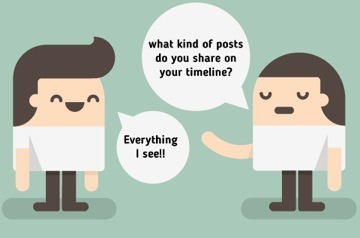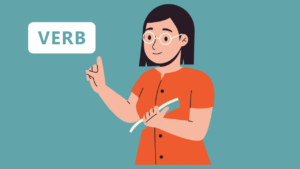An ‘Out Of The Blue’ Lesson Plan
We all have to cover for our colleagues from time to time. And sometimes it happens with only a moment’s notice. I had the idea for this lesson a couple of months ago when I found myself covering for a colleague three times in one week, making it difficult to come up with something useful and new. I had to think on my feet. Luckily, I got this idea, and everything fell into place!
It’s a speaking lesson plan, that’s light on the TTT (Teacher Talk Time), heavy on the STT (Student Talk Time), works with: almost any level/age, various topics, and needs nothing that isn’t already in your classroom.
Lead-in
You need to think of a topic. For me, it was social media, but after my first time, I’ve tried it with books, computer games, and hobbies. You can google ‘social media’ for images, I choose this one. If you don’t have a computer, you can draw or write the names of some websites. Then, try to elicit the word ‘social media’ from your learners, as well as the names of some of the social media services out there.
Brainstorming
Now pair the learners and give them 2 minutes to come up with words that are used on Facebook. They should come up with words like: share, post, groups, like, comment, emoji, timeline, photo, poke, and the list goes on. After they finish, ask the whole class to give you some examples of what they have written and write like 10 of them on the board.
Individual Work
It’s time the learners rolled up their sleeves and got their hands dirty. Ask each one to get a pen and a piece of paper, and choose 3 to 7 words from the ones on the board, depending on their level, and the time you have for the class. Have your students make a question for each word, working individually. You will need to demonstrate for them first. Choose a word like ‘share’ and write a question on the board: ‘what kind of posts do you share on your timeline?’ Now that they know what they have to do, give 3-5 minutes to work. While they do, circle around the classroom, and check if they are doing the task properly and if they need any assistance.
Short Conversation
It’s time to use the creativity of your learners to make a conversation about the topic. There are only so many ways to organize a classroom conversation. For this activity, I told the out rows to sit still in the chairs, and for the learners in the inner rows to move to the seat next when I clapped. I liked this because it minimized the noise and chaos, and maximized the organization of the activity. Learners ask each other the questions they wrote, and what is cool is that the questions aren’t the same. With every new conversation there is a new face and some new questions. I circled and monitored the conversations and gave 60-90 seconds for conversation before clapping.

Delayed Feedback
This is simple. Write some mistakes that the learners made while speaking and ask them to correct them. You can also write correct sentences to get your learners really thinking, since they won’t be only looking for mistakes.
A debate or a discussion?
Now you have 2 options to choose from, depending on your class variables: a discussion and a debate.
Discussion
There are many ways to hold a discussion. On this occasion I grouped the learners into teams of 4, then wrote a question on the board related to the topic. The students had 2-3 minutes for a question to be discussed, during which they have to keep talking!
Example questions:
-What are the pros of social media networks?
-What are the cons of social media networks?
-What are good groups to join on Facebook?
-What is an acceptable amount of time to spend on social media networks to avoid wasting all day?
Debate
Explain to the learners what ‘debate’ means. Divide the class into 2 groups, for and against. Give them about 5 minutes to brainstorm ideas within the group (you can also provide some input, like a short text, for example adapting this one). Write on the board some functional language used in debates like, agreeing, disagreeing, interrupting, clarifying, expressing an opinion, persuading, or concluding. You don’t have to write all of them. My learners are middle-schoolers and I wrote just 3 or 4 categories. Then, try to elicit the expressions, and provide some for them if it’s their first debate.
Here’s a short list:
- Agreeing: I agree with you. I think you convinced me. You totally have a point.
- Disagreeing: That’s true but… . With all due respect…. I see your point, but… We’re going to have to agree to disagree. I’m afraid I disagree entirely. I disagree with you there.
- Interrupting: sorry to interrupt, but… I’d like to say something. If I could speak for a moment… I’d like to cut in here. You haven’t answered my question.
- Expressing an Opinion: I really think that… , In my honest opinion… From my experience… From my point of view…
“Providing learners with functional phrases empowers their debating skills”
Time to get the ball rolling. You need to set rules for the debate. For example, only one person talks at a given time, and learners can’t have two consecutive turns to talk. You can also assign one of the learners to be the judge, while you take notes of any ideas that you’ll later on praise and correct.
What about homework
There are many homework ideas related to this lesson plan, like a piece of writing about the topic, a presentation about the topic, or a how-to presentation (like how to publish a successful page on Facebook, or if you have some talents in the class, how to design an awesome Facebook cover page.)
Over to you
Would you use this plan with learners? How old are they and what is their level? What topic would you use?




